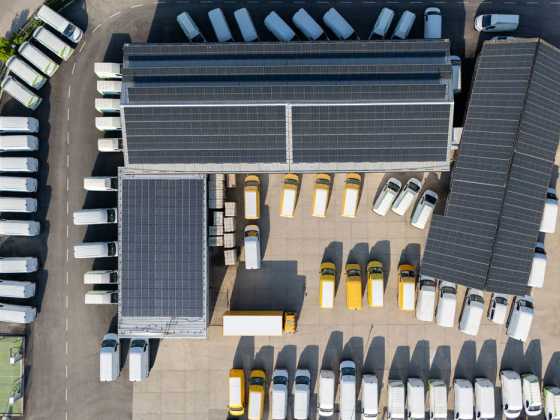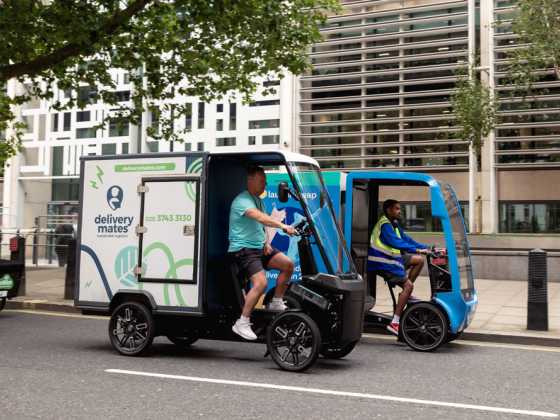Up to date guidance for reducing van emissions
The LowCVP’s Dan Hayes explains how the updated Low Emission van Guide and supporting Cost and Carbon Calculator can help van operators to cut costs while reducing emissions.
The Low Carbon Vehicle Partnership (LowCVP) has updated its Low Emission Van Guide and associated web tool for operators interested in reducing running costs while also cutting their carbon emissions and impact on local air quality. The Guide is aimed at operators of small to medium-sized fleets of commercial vehicles, covering vans up to 3.5t GVW (gross vehicle weight).
The update includes an additional chapter on vans powered by hydrogen, including dual-fuel and hydrogen fuel cell range extenders along with revised whole-life cost of ownership figures to reflect current incentives and price trends. The Van Cost and Carbon Calculator (VC3) online tool now provides users with greater variability in biofuel blends and vehicle payloads to get more accurate cost estimates of operating Low Emission Vans (LEVs).
Room for improvement
The van market is the fastest growing sector of UK road transport with vehicle numbers increasing at 3.5 per cent per year and with more than 10 per cent of the vehicles and 14 per cent of the CO2 coming from this sector. The sector is almost entirely diesel-powered (96 per cent) and around 50 per cent of the vehicles are owned by companies.
Research carried out by the LowCVP identified that one of the barriers to advancing the take-up of low carbon vans by fleet operators was a lack of publicly available information regarding availability of different fuels and technology options for vans operating over different duty cycles, their operational capabilities, infrastructure requirements plus the environmental and financial benefits.
With the growing focus on air quality issues in urban areas, more local authorities (including Birmingham, Bristol, Islington and others) will be introducing measures to implement Ultra Low Emission Zones (ULEZ) and limit access to, or even prevent, heavily polluting vehicles from entering certain areas. Van fleet operators need to pay careful attention to changes in local policy that might affect their business plans over the lifetime of a newly purchased van (typically 3-5 years).
Low Emission Van Guide
As such, the LowCVP commissioned low carbon technology consultancy Cenex to create the Low Emission Van Guide and supporting Cost and Carbon Calculator (VC3) online tool to provide fleet managers and private owners with a greater understanding about the benefits of LEV technologies, demonstrating how lower emissions often means lower fuel costs and a lower overall cost over the lifetime of the van.
Prepared with support from several key fleets and stakeholders, the LEV Guide:
- Sets out the business, environmental and operational case for using low emission vans
- Gives van operators the knowledge and resources required to assess which vans are right for them
- Provides case studies showing the total cost of ownership and cost savings achievable from different types of low emission fuels and technologies
The updated Guide covers a wide range of technologies and fuels including electric, plug-in hybrid, LPG, CNG, hydrogen and biodiesel. Each topic sheet compares a technology to an equivalent diesel van to provide an indication as to its operational restrictions and performance, additional infrastructure requirements, the environmental performance - such as air quality and life cycle CO2 emissions - and the level of market readiness.
The financial case for each technology is also presented to show how, in many cases, alternative fuels can provide a payback within about five years especially if operators are looking to operate in low emission zones, such as the one in London.
The Guide shows that, in one example, operators using battery electric vans could reduce the whole-life costs of a vehicle operating in the London Congestion Charge zone by £18,340, or £5,215 outside London.
VC3
The VC3 online has been designed to allow users to refine the parameters of the cost and emission estimates presented in the Guide, such as fuel costs, driving habits, ownership duration and annual mileage to give a more accurate representation of potential savings.
A case study about each technology is provided with comments from van operators’ personal experiences to give readers an insight into the drivers and benefits of using alternative fuels. Examples of fleets, both large and small, from the commercial and public sectors are also listed illustrating that LEVs are being used nationwide in a wide range of applications.
Hydrogen case study – Commercial Group
The Commercial Group is a business service supply company with a strong environmental focus. Taking advantage of grant funding mechanisms to reduce the cost of vehicle deployment the company now operate nine retrofit dual fuel diesel-hydrogen Transit vans supplied by ULEMCo, which accounts for around half of their fleet. The vans emit just 59g CO2 per kilometre (over the regulated test cycle) meaning they are eligible for a 100 per cent London Congestion Charge discount.
Commercial Group’s Andre McKenzie explained the other benefits they are seeing in operating the vehicles: “Much of our new sales interest and existing customer base look to our environmental commitments when awarding contracts, which is very much a part of our USP”. Andrew continues, “operating with dual fuel technology, and retaining the ability to have pure diesel operation as a fall back, was very important to us in what remains an emerging hydrogen market”. Commercial Group operates the vans over repeatable delivery routes where access to public hydrogen refuelling stations is possible.
To download the LEV Guide and use the VC3 calculator visit the Low Emission Van Hub, which also provides more information on different models and links to suppliers of LEV technologies.







